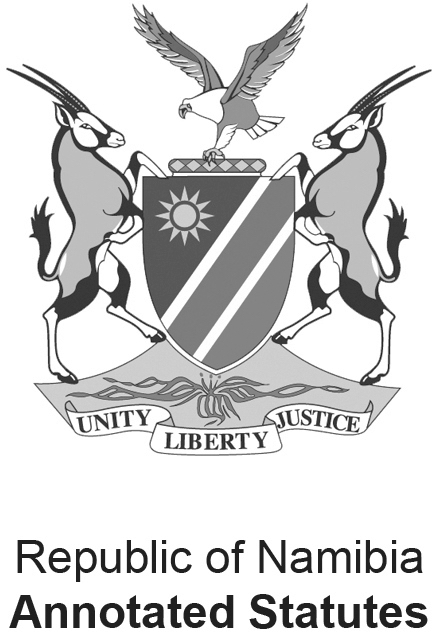
Prevention of Undesirable Residue in Meat Act, 1991
General Regulations, 1994
Government Notice 219 of 1994
- Published in Government Gazette 975 on 28 November 1994
- Commenced on 28 November 1994
- [This is the version of this document at 15 November 2017.]
- [Note: The version of this legislation as at 15 November 2017 was revised and consolidated by the Legal Assistance Centre and the Government of the Republic of Namibia. All subsequent amendments have been researched and applied by Laws.Africa for NamibLII.]
1. Definitions
2. Requirements, measures and procedures relating to the administration of Group I or Group II or Group III substances
3. Disposal of meat and meat products seized in terms of section 6(2) of the Act
4. Procedures to be followed by inspectors in obtaining or transmitting samples
5. Reports of analysts
6. Manufacture and marketing of Group I and Group II substances
7. Offences and penalties
Any person who contravenes or fails to comply with any provision of these regulations shall be guilty of an offence and liable on conviction to a fine not exceeding N$2 000 or to imprisonment for a period not exceeding six months.History of this document
15 November 2017 this version
Consolidation
28 November 1994
Commenced
Cited documents 2
Legislation 2
| 1. | Criminal Procedure Act, 1977 | 1919 citations |
| 2. | Prevention of Undesirable Residue in Meat Act, 1991 | 12 citations |